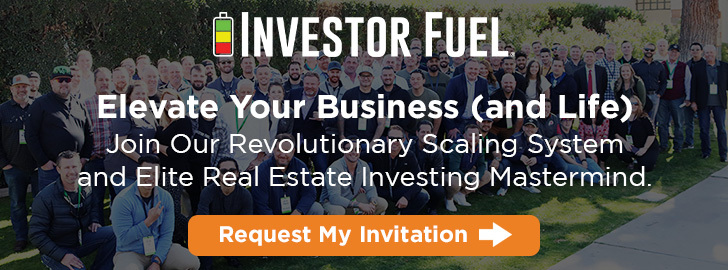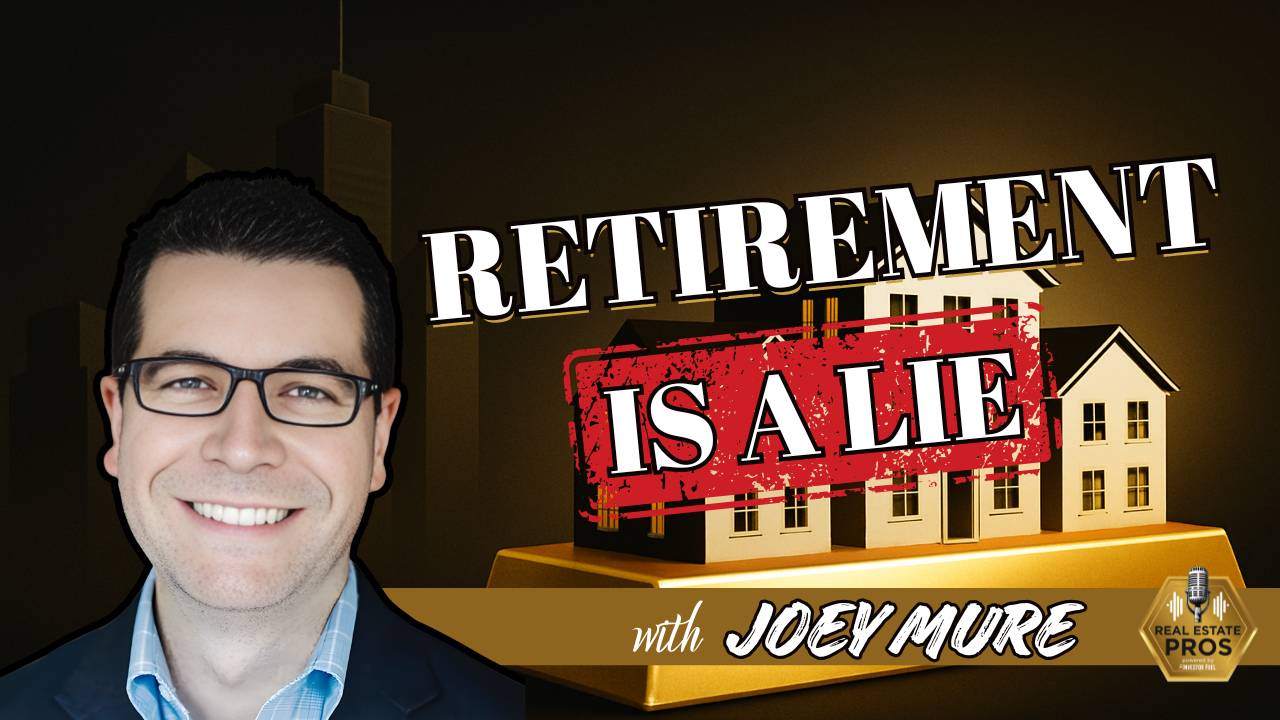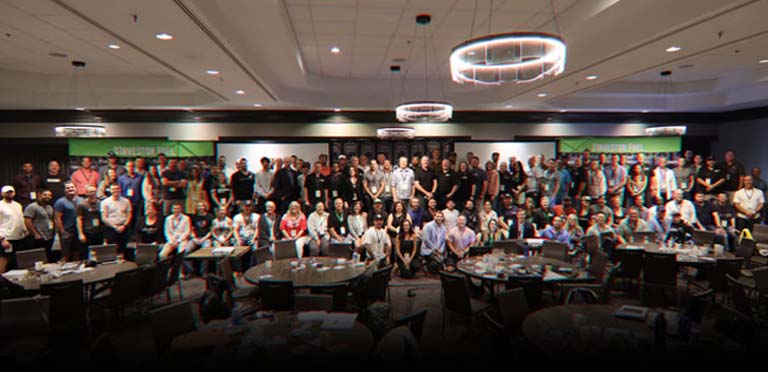
Show Summary
In this conversation, Joey Mure discusses the journey to financial freedom, emphasizing that knowledge alone is insufficient. He highlights the importance of having a cashflow system and the right support to achieve financial goals. The discussion also covers various investment strategies, particularly in real estate, and the significance of education and community in the investing process.
Resources and Links from this show:
-
Listen to the Audio Version of this Episode
Investor Fuel Show Transcript:
Joey Mure (00:00)
And so we spend 12 weeks with each one of our cohorts to go through and teach them these basic fundamentals that give them at the end of the day, insane confidence, because that is what’s missing with most investors isThey just don’t know what they don’t know and so they stay stuck. And so I think that’s the support element that we have been able to provide. And then the last part of that support element is just creating community around it. So we have over 10,000 people on our app. You can actually search WealthWithoutWallStreet.com forward slash real estate pros and you’ll actually get access to the app, our contact info, all that sort of stuff.
Michelle Kesil (02:19)
Hey, everybody. Welcome to the Real Estate Pros podcast. I’m your host, Michelle Kesil. And today I’m joined by someone that I’m looking forward to chatting with, Joey Mure, who is a co-founder of Wealth Without Wall Street. So excited to have you here on the show today, Joey.Joey Mure (02:36)
Thanks, Michelle. Looking forward to the conversation.Michelle Kesil (02:38)
I think our listeners are really going to take something away from how you’re approaching educating people and providing a cash flow system So excited to dive in with youJoey Mure (02:51)
Awesome.Michelle Kesil (02:51)
First off, for those who are not yet familiar with you and your world, can you share what your main focus is?Joey Mure (02:58)
Michelle, our main focus is freedom, financial freedom and getting people.to the very simple formula everybody has heard but nobody seems to know how to get there is when your passive income exceeds your monthly expenses. See, knowing the formula is not enough, you have to actually fill in the gaps. Like you have to have your cashflow system in place and you have to actually become an investor. And I think those two things are not easily figured out, but that’s something that we’ve determined over the last 15 years that’s helped us to get from zero dollars in passive income
to over $50,000 a month that we report on every single month in our passive income report.
Michelle Kesil (03:39)
Amazing. What made you want to support people with financial freedom? Like what’s your story of kind of getting there?Joey Mure (03:48)
Well, I started in the mortgage business actually, Michelle, back in 2003. I was in there for 11 years and during that time I made great money. In fact, over $300,000 a year to me in my 20s was really good. But I looked up and I realized, man, my time is not my own. I have five daughters, my wife, we were at the beach one time and I remember having to tell them multiple times, hey, you guys go on down to the beach.and I’ll be right there and just have to make one more phone call.
What would happen four hours later? I’d be walking down to the beach and they’d be walking back up from the beach and I’m sitting there thinking this isn’t right like this isn’t how This isn’t what what’s this all for if we’re gonna be making the kind of money that I can’t even be present with them Something’s not quite right and the reality is I didn’t know that financial freedom was the answer at the time But I knew something had to change and I was really on the quest to figure
it out and that led me down this path to where 2014 I left my career in the mortgage business and started teaching people what I had been learning for four years prior to that and man now looking back I’m just so grateful because it’s had such a great impact on my family but also on those that we get to serve every day.
Michelle Kesil (06:01)
Amazing. That’s so beautiful that you were able to, you know, be there with your family and support people to have more time for whatever lights them up.So what is that strategy that allows people to get to that place where they can be with their family and have financial freedom?
Joey Mure (06:19)
Well, if we start with step one, it’s really identifying. We actually have in a book we wrote, Amazon best seller, if you want to check it out, we use the analogy of a GPS as the starting place. So a GPS, you have to know where you are.And then you also have to know where you’re headed in order for it to give you the directions to get there. And I think the number one thing is to say, well, where am I right now? What am I doing right now with money? And what is the outcome that I’m actually trying to accomplish? And if those things don’t match up, if they’re not going to eventually lead to the outcome, then something has to change today. Something with my goal, which is the G and GPS has to change. And then that leads us to the plan, the P
is really determining what am I doing with money today? If I’m putting money, and I’ll just give you a very simple analogy, if I’m putting money in a 401k or an IRA or something that puts money out of my control for the next 20, 30, 40 years until I’m in my 60s, does it actually help me get to financial freedom today?
And the answer is no, right? It doesn’t produce passive income today and it doesn’t reduce a monthly expense today.
So why would I keep doing those things if they’re not getting me closer to my end goal, my financial freedom goal? And so what we do in the very first step, Michelle, is we help people to identify where are those money traps that people are putting money that is not serving them to their goal. We help them to determine like how much of this is actually, am I writing down the goals? Am I sharing this with my family? Are we all on the same page to get there?
And then how can I start saving more effectively to get to financial freedom more quickly? We use a concept called the infinite banking concept as like the center of that whole system that most people either don’t know about or they’re not using optimally. And we help coach them on how to put that whole thing together so that they never are out of alignment with what their goal is. And then from there, we can kind of step into becoming an investor. But that’s
really the first step is identifying where your money’s going. Is it supporting your goal and then making changes that would help us get there faster.
Michelle Kesil (08:47)
got you. So would you say the IRA and the 401k are not supportive for most people?Joey Mure (08:54)
If their end goal is to be financially free in the next few years, the next five years, and they’re in their 20s or 30s, then the answer is absolutely, that’s not the right vehicle for you. Because it doesn’t matter what the internal rate of return is, it doesn’t matter if your employer is matching it, it doesn’t matter. All those things don’t matter if you’re literally locking up money until you’re in your 60s and you want to be free today.It just doesn’t support the end goal. so we have to start doing uncommon things. Michelle, when we first start out in our career, we’re doing very common things. Everybody’s doing it. But when you become an investor, like if you’re buying real estate, you’re creating cash flows and passive income for you and your family, that’s already an uncommon thing. And so we have to start doing uncommon things with our money to support that.
Michelle Kesil (10:23)
Yeah, totally. So, would you like not suggest putting money into those avenues at all and instead putting them into other systems that would then fund retirement anyways?Joey Mure (10:35)
I would say retirement is a word that I have erased from my vocabulary. ⁓ Well, I just don’t believe it. I think it’s a lie. Number one, even just from a biblical standpoint, retirement means to be taken out of service. And I don’t know anybody who has value to bring to the world that wouldn’t want to continue to do that no matter what age they are.Michelle Kesil (10:41)
I like that.Interesting,
Right.
Joey Mure (11:03)
And so I’m not saying that you’re not working as hard as you were in your 20s or 30s, but I’m saying in general, retirement is this idea that was given to us from the Industrial Revolution and said, hey, you know what, we need to make room for more workers. So we need the old people to move out. It’s like, no, you have value to give to the world. You’re going to continue to do it. And we don’t just put up with work.Right? That’s what retirement tells you. You just got to put up with it until you get into your 60s or 70s and then you can just stop working. That idea is create freedom today so that you can actually decide what you’re going to do with your time.
Michelle Kesil (11:33)
people.Yeah.
Yeah.
Joey Mure (11:47)
Andif that means spending more time with family, if that means spending more time on building businesses, if that means spending more time serving your community or your church or whomever, that is ultimately why we create passive income that doesn’t require us to be the asset at work.
Michelle Kesil (12:07)
Yeah, I love that. I think that’s really powerful and a really, yeah, just unique perspective that I resonate with. So what are some of the, like, what’s the next step then? So people figure out their goals, they kind of like realize where they’re putting their money, maybe what they have that’s extra that they can fund into, you know, other projects. What does that look like?Joey Mure (12:33)
Well, so we talked about the goal, the G, the P is the plan. Support is the last part, the S, so GPS. And I think support can come in many different ways. One of the ways that we have found to be very valuable is two things. One, getting the training, getting the education around becoming an investor. Because there’s a lot of people, I think, that have started businesses and they’re very, veryMichelle Kesil (12:39)
Okay.Joey Mure (13:02)
good at it. They’re very profitable business owners and they think, well I’ve got extra money, I can invest it. a business owner and an investor are two different things. But we don’t think about them like that. We think, well I’ve been successful at one, I can be successful at the other. But the truth is, you have to be optimistic to be an investor, I mean a business owner. But to be an investor, you have to be kind of pessimistic. Like you have to go into a deal saying, eh, this isn’t going to work.I want you to convince me how it’s going to work. I want to look for all the problems in something instead of, man, this is going to be great. Let’s figure it out. Let’s power through. That’s what a business owner thinks. And so I think having training, having education around what sort of investor are you? We call it the investor DNA profile. Your personality should match up with the things that you invest in.
because it’s way more powerful to be aligned than to be misaligned. The second thing is we help people build a buy box, right? What kind of things do I want the end investment to have? What characteristics? Like do I want it to have cashflow in the first six months? Or am I just looking for equity?
Or am I looking for tax benefits as it relates to what I’m going to invest in? Do I want to be more hands-on or less hands-on? Do I want to have an advisory role in an investment or do I want to be completely passive with no say-so whatsoever? All these things really will dictate what deals work for you and what deals don’t. Instead of just, ⁓ this has a good ROI. Well, ROI of what?
Is it monthly cash flow? Is it over the course of the five years that you’ve invested in it? Like it doesn’t, those things you have to ask more questions.
And so we spend 12 weeks with each one of our cohorts to go through and teach them these basic fundamentals that give them at the end of the day, insane confidence, because that is what’s missing with most investors is
They just don’t know what they don’t know and so they stay stuck. And so I think that’s the support element that we have been able to provide. And then the last part of that support element is just creating community around it. So we have over 10,000 people on our app. You can actually search WealthWithoutWallStreet.com forward slash real estate pros and you’ll actually get access to the app, our contact info, all that sort of stuff.
But that’s where people ask questions. That’s where people gather and they talk about deals. That’s where they mention, hey, this is what I’m looking for. Do you know a connection about this? But the biggest thing is you just know you’re not crazy.
Right? Because you’re surrounded by other people who are on the same path. Whereas if you go to your office or you go to your family or to your friend group, they may not be on the same page with you around this. And so it’s easy to lose momentum when you don’t have people surrounding you on the same path.
Michelle Kesil (16:55)
Yeah, absolutely. I think that’s so important to have that like-minded community and people that can support you, keep you accountable, teach you new things, and help you on that journey.Joey Mure (17:08)
for sure.Michelle Kesil (17:09)
So when it comes to real estate investing, are there certain strategies that you have found more, I don’t know, profitable or secure or that you just encourage to your students?Joey Mure (17:23)
Well, I’ll say my favorite one, which is one we report on this every month, is our land investing strategy. And we learned this from the landgeek.com, ⁓ Mark Podolsky. And he actually, his team runs our land investing company. So it’s completely hands off for Russ and I, but we have done this since 2020. And in those last five and a half years, ⁓We have invested a little over $500,000 in buying raw land and then turning around and selling it on retail terms as like an owner finance deal. And those notes right now are surpassing $36,000 per month in just recurring ongoing note revenue every single month.
and our enterprise value is almost 2.8 million. So it to me is my favorite, ⁓ one, because it’s hands off, two, because we have excellent operators, ⁓ three, because it is basic raw land, there’s not a lot of variables with it. There’s not houses involved if someone doesn’t pay, there’s no foreclosure process. ⁓ And I think the only negative to it is there’s not a lot of tax benefits. ⁓ It’s just ⁓ regular,
income coming from this business so it’s hard to offset with tax ⁓ savings and other things but it’s actually I think a sustainable long-term business without a lot of variables.
Michelle Kesil (18:58)
Yeah, amazing. That is super unique. I haven’t heard many people talk about that. Are there any like difficulties or challenges to get into that business? Any criteria that someone needs to learn about it or get started?Joey Mure (19:13)
I would always highly recommend people educate themselves in the process and go to people who have done it. ⁓ I actually just spoke at the Dirt Rich Summit, is ⁓ Mark’s ⁓ deal that he did in Austin, Texas. And I would highly recommend if this something you want to do that you get that education from them directly. ⁓ In our case, we got the education, but we knew that we also couldn’t operate the business because there is some time that itto mail out letters, to talk to sellers, to negotiate deals, to buy the properties, to then turn around and market it. And so for us, I think as far as a challenge, it would have been time and really skill. Like Russ and I are not great operators. I kind of mentioned that earlier.
And so for us, it was a no brainer to be able to hire their team as a partner in the business to run the business. And we’re just the capital partners and advisory kind of partners. So ⁓ that would be the two biggest challenges is time and understanding and definitely getting the education.
Michelle Kesil (20:23)
Yeah, absolutely. So what are you most focusing on solving or scaling next for your business?Joey Mure (20:31)
For us, I think it is, as I mentioned before, really focusing on the operations and ⁓ getting people on the team who can stretch us, who have been there, done that, they’ve done acquisitions, they’ve done scaling at the highest of levels. And that’s what’s on the agenda for us. We’ve already proven we can do it, but we need to do it at a much higher level to hit our goals and the timeline that we have set.Michelle Kesil (21:00)
Yeah, absolutely. So what are you, like are there certain different avenues of education that you provide people? What are kind of like the ways that you support people through their investing and income journey?Joey Mure (21:14)
Yeah, well for those who are just kind of wanting to kind of learn DIY, if you will, we have the podcast, we have ⁓ the community I mentioned, there’s our app, and you can get all access to these things if you go to wealthwithoutwallstreet.com forward slash real estate pros.But those are kind of the free things. We do webinars every two times a month. We actually have guest speakers each time, so that’s also another free way people can get ⁓ access to our information. And then from there, we have the two steps that I mentioned. We have our cashless system. It’s called a passive income operating system.
You can actually get a free webinar to learn more about that on that same page I mentioned. And then our passive income lab, that’s our 12 week course that people can invest in to learn how to be an investor and get their even custom GPT to help them know what’s a good deal for them and what’s not. Those are the two primary ways that people invest with us and grow by the paid stuff that we do.
Michelle Kesil (22:23)
Amazing and when you say Like the GPT helps people figure out the best way to invest is that all? Correlated to real estate or what are like those different categories of investments?Joey Mure (22:36)
So that is dictated by the student. So as they go through our passive income lab, they learn their investor DNA profile, they build into their custom GPT exactly what they’re looking for. What are they trying to accomplish? What are the aspects and the characteristics of each investment that they’re wanting to ⁓ get their money at work in? And so then that GPT acts as an advisor almost. So they go and get a PowerPoint or aPitch deck or a PPM from an investment that they’re interested in and they can dump it into that GPT and say hey I’m thinking about this as a potential way to invest What do you think and it will literally spit out? Hey, this meets this this and this criteria, but it fails on this this and this I would say this is a yellow at best or this is a green for you because it hits all these metrics and so I think it just gives people just insane
objective feedback that gives them confidence to say yes or no quickly.
Michelle Kesil (23:41)
Yeah, amazing. That’s super cool. So before we wrap up here, if someone wants to reach out, connect, learn more, where is the best place people can find you?Joey Mure (23:51)
I’d love for you to tell me that you heard Michelle and I on the Real Estate Pros podcast if you go to WealthWithoutWallStreet.com forward slash Real Estate Pros. All my contact info is on there. And yeah, again, let me know you heard me on this show.Michelle Kesil (24:07)
Perfect. Well, listen, I appreciate your time, your story, and your perspective. Thank you for being here.Joey Mure (24:13)
my pleasure.Michelle Kesil (24:13)
And for those listeners tuning into the show, if you got value, make sure you’ve subscribed. We’ve got more conversations with operators like Joey who are building real businesses. We’ll see you all on the next episode.









